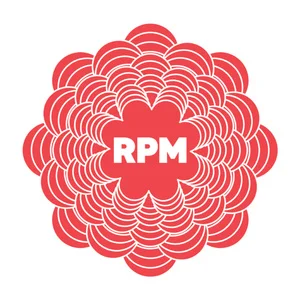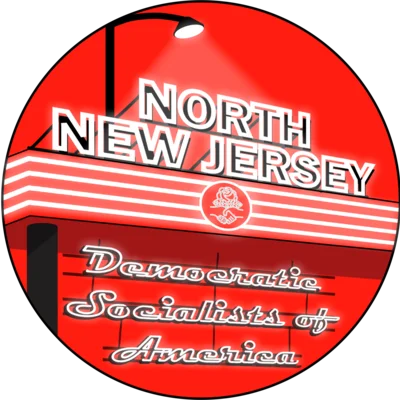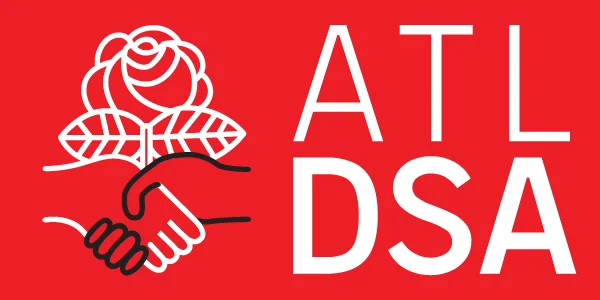
Serving Socialism: Restaurant Workers Organizing for Relief And Power
This past Monday, New York City shut down indoor dining at restaurants and bars as COVID cases continue to rise in the city and across the country. Many restaurants were barely surviving before New York City became the epicenter of the coronavirus pandemic earlier this year. With little to no government support to make up for the loss of business needed to maintain necessary restrictions to stop the spread of COVID-19, restaurants and bars across the city are shutting their doors for good. And of course those most impacted in all of this are restaurant workers.
Today we’ll be talking with Natalia, Paul and Crystal, comrades from here in New York City and across the country in Minneapolis and Austin who are organizing with the Restaurant Organizing Project, and effort to organize restaurant workers for relief and power on the job during COVID-19 and beyond. We’ll talk about the many labor issues that existed for restaurant workers before COVID, how the pandemic has exacerbated those struggles while creating new ones, and how workers are fighting back.
Follow the Restaurant Organizing Project at twitter.com/@restaurantproj or visit labor.dsausa.org/restaurants to learn more about how you can get involved!


Space Coast DSA
Space Coast DSA (SCDSA) Organizing Committee (OC) was originally formed in 2017 on the growing wave of interest in socialism nationwide. After two years we formally adopted a set of Bylaws and in 2019 were formally recognized as an official chapter. We engage in a number of projects as a chapter from protests and tabling events to mutual aid programs and political campaigns. If you’re interested in these endeavours or just furthering your ideological education, all are welcome in our spaces member or not.


North New Jersey Democratic Socialists of America Denounces Police Repression in Bergen County, Calls to Defund the Police
December 14
HACKENSACK, NJ — This weekend in Hackensack, protesters gathered in support of the hunger strikers detained by ICE inside the Bergen County Jail, as they have throughout the month the strike has lasted. These peaceful protesters were met with violence by a militarized police force. The excessive militarization of local police to suppress peaceful dissent, the racialized terror and violence they inflict, and the role they play in facilitating the ICE detention and deportation apparatus, all show why we need to defund the police.
Hunger strikers protesting their detention by ICE are routinely retaliated against and lied about by officials, and such retaliation has been extended to the solidarity demonstrators. While the Bergen County sheriff spins false stories about the protestors, as has Hudson County executive Tom DeGise about protests outside his home for the renewed ICE contract, North Jersey DSA rejects these fraudulent narratives. Our members have been on the ground in Hackensack, Jersey City, and everywhere ICE is protested in North Jersey, and we can attest: these actions have been peaceful and led by our own communities.
“This is the kind of movement building that is sending a powerful message to our communities on how we can stop the atrocities of ICE. As an Ecuadorian immigrant who has had family members detained because of their immigration status, I was inspired to see an area I have driven by numerous times growing up — to visit my mom at work a few blocks away, take the bus at the nearby station to go to work, buy groceries and eat with family– become a space of solidarity and strength in a way that I have never seen before, it’s moving.” reflected NNJ DSA co-chair Jorge Maldonado.
Yet when people came out in peaceful solidarity with the hunger strikers at the Bergen county jail, they were met with an outsized number of police in riot gear ready to use violence without hesitation. The violence enacted by the Bergen County police was in stark contrast to the peaceful protest and makes it very clear who and what the police serve to protect.
Bergen County has revealed that protecting profits made from incarcerating undocumented people in terrible conditions supersedes basic human rights. Bergen County and its police force have demonstrated that the rights of citizens and attempts at dissent will be forcibly quashed. It is a textbook study in police existing to serve corporate interests over human rights, in this case prioritizing ICE contracts whose primary purposes are to perpetuate the bloated correctional infrastructure in Bergen, Hudson, and Essex counties. That’s why we need to reallocate their funds to public needs as in schools, housing, jobs and ensuring that not a single human being goes hungry.
North Jersey DSA demands that we use the budgets of the police to enrich the people, not the interests of capital. New Jersey needs to end its ICE contracts and all ICE collaboration, and also defund the police.
Comrades like Ridgewood for Black Liberation, who have done amazing work organizing in Bergen County, have met this violence with peace, and we applaud their work. We stand with all people opposing ICE inside and outside ICE detention.
In solidarity,
NNJ DSA
The post North New Jersey Democratic Socialists of America Denounces Police Repression in Bergen County, Calls to Defund the Police first appeared on North NJ DSA.


We Demand a People’s Bailout
When the capitalist media finally pronounced the resounding defeat of fascist Donald Trump, workers around the world breathed a sigh of relief – but only for a moment. Millions continue to suffer through the COVID crisis despite the changing leadership. Workers face mass evictions and unemployment, police repression, and intensifying climate change. The working class must demand that Biden and Harris make real change and break from the neoliberal status quo that brought us Trump and his neofascist movement in the first place.
If the US government can afford to bail out corporations with hundreds of billions of dollars in support, it can afford to bail out the working class. We demand COVID relief now in the form of a $15/hr minimum wage and $2000 monthly survival checks. We demand a safe, livable planet for all, and a Green Jobs Guarantee that puts millions of people to work building the green infrastructure necessary to halt climate change and achieve 100% renewable energy by 2030. We demand the passage of the Emergency Healthcare Guarantee Act and a Medicare For All single-payer healthcare system that guarantees healthcare as a right, not a privilege. We demand a People’s Bailout!
In order to win the COVID relief we deserve, we must overpower the billionaire class. We, the Metro Atlanta DSA, know that this struggle must begin with the immediate defeat of the Republican candidates in the January 5th runoff elections. Control of the US Senate hinges on Georgia, and a Republican-held Senate would be a massive barrier to passing even the most modest reforms. We recommend voting against all Republican candidates on the ballot, in order to make progress possible. However, we do not endorse or support any candidates running in the election. If the Republicans lose the election, our next immediate task will be campaigning against the incoming neoliberal capitalist senators to pass real COVID relief for workers.
Throughout this election cycle, we are organizing to combat racist voter suppression, and to help working Georgians cast their votes in the runoff elections. We are holding socially distanced canvasses and lit drops every weekend, making phone calls and sending texts to voters, and raising awareness about the January 5th election while building support for key socialist issues such as the Green New Deal, Medicare for All, and a living wage.
If you would like to get involved in our campaign, please join DSA, join our chapter, and check our calendar for upcoming events. We are a volunteer-led organization and we rely on dues and donations from working people to fund our activities. Please consider donating to support our campaign. You can email jan5runoffs@madsa.ga for more information.
Workers will fight for the dignity we deserve. Workers will win. Solidarity.


Medicare-for-All Multifaith Forum

Finals Week: Student and Worker Organizing on Campus
Welcome to FINALS WEEK at Revolutions per Minute. Inspired by the developing tuition strike at Columbia-Barnard and other actions around the country, we’re focusing on workers and students organizing on campus. Our live guest, David Duhalde, will speak on the history of the Young Democratic Socialists of America, DSA’s campus-oriented arm and a crucial part of our diverse socialist movement. We also hear from Michele of CUNY Adjuncts on their struggle against austerity and for a human-centered approach to graduate labor. Finally, farmers’ protests have made global headlines as millions of workers fight back against neoliberalism in India. We’ll end our show tonight with a brief interview with Jagpreet of Queens DSA on these massive protests and the governmental policies that provoked them.
To learn more about the Columbia-Barnard tuition strike, visit linktr.ee/columbiaydsa.
Tired of austerity measures like those that threaten CUNY adjuncts? Tax the rich! This week, NYC-DSA, NYCC, Empire State Indivisible, and DSA chapters around NYS are throwing down to protect our communities from budget cuts. As part of their Tax The Rich week of action, their campaign is calling people across New York state to pressure Albany to Tax the Rich to fund our future. NY is facing a budget deficit of over 50 billion and we need Albany to act in the new year to pass over 50 billion in new taxes on the rich to save our state from catastrophe. Go to taxtherichnys.com to get involved.


North Jersey Democratic Socialists of America (DSA) Condemns Tom DeGise’s Fascist Repression in Hudson County
December 9, 2020
JERSEY CITY, NJ — North Jersey Democratic Socialists of America (DSA) condemns the heavy-handed fascist repression of Hudson County executive Tom DeGise, who responded to peaceful legal protests on public space with an unconstitutional restraining order, heavy police presence, and ultimately arrests of peaceful protestors standing legally on the sidewalk. This all reflects the catastrophic collapse of democracy under DeGise’s suffocating political machine.
In an absurd op-ed piece published today, DeGise singles out Democratic Socialists, blaming DSA and other activists for “terrorizing” his family with peaceful protest. Members of North Jersey DSA have helped organize and attend these protests, and the only people terrorized at them were participants, including a DSA member among the four unjustly arrested on Tuesday night. “It’s nice of Mr. DeGise to signal-boost DSA in his Trump-like op-ed,” says Allison Howard, a DSA member who lives in Jersey City; “I’d say we’re living rent-free in his head, but in reality DSA does a lot of work in Hudson County, from mutual aid projects for those in need to canvassing for issues and politicians who will someday replace his stale, reactionary governance. We belong to and represent this community better than he does.” In Hudson County, DSA has worked on Know Your Rights programs for tenants, organized against Airbnb’s colonization of Jersey City, and phonebanked for marijuana legalization, in addition to long protesting the county’s contract with ICE.
The recent protests result from the Hudson County freeholders’ vote to renew the county’s ICE contract for up to ten years, after they promised in 2018 to end the contract this year. They renewed it against the clear public will expressed in over ten hours of public testimony that was unanimously against the contract, which generates revenue for Hudson County by holding people detained by ICE in the county jail, whose deplorable conditions have been responsible for multiple deaths in the past several years.
DeGise’s claims must be countered. Many of DeGise’s arguments are used by far right groups and conservatives, but he distances himself from these groups through the fact that he’s an elected Democrat. It is important to recognize that the brutality of ICE and deportations were extremely common under the Obama administration. In 2008, 378,582 people were detained by ICE detention programs. A Biden/Harris presidency will not lessen the human rights violations ongoing in ICE detention centers. DeGise’s fear mongering, claiming that those detained by ICE are rapists, murderers, and drug dealers ignores the fact that all ICE detention is civil detention. ICE has detained American citizens at their facilities, and had DeGise actually listened to his constituents and neighbors, instead of referring to them as “left-wing extremists”, he would know that such an abhorrent institution has no place in our diverse community.
DeGise stated that the county is given money from the federal government to run ICE at Hudson County facilities. In Hudson County’s FY2020 budget, it anticipated receiving $17,520,000. As of November 19, 2020, there are only 83 people in ICE detention. The county will not make more than 4 million dollars this year, $13 million behind its estimation.
The COVID-19 pandemic has contributed to the funding losses. On that same note, Hudson County jail employees have died from COVID-19. The family of one officer reported that he was not given any PPE while working at the jail. Over 60 people in the Hudson County jail have been infected with COVID-19. Including employees, inmates, and those detained by ICE.
As a final counter to DeGise’s claim that “the county is paid by the federal government to serve this important role, and that funding helps employ hundreds of correctional officers and balance our budget”: Hudson County has faced the opposite problem. In 2019, the Hudson County Corrections Department had 100 unfilled CO positions. Overtime pay for the county’s COs was $4.8 million in 2014 and in 2018, $8.5 million was paid out. It’s obvious that the money given to the Hudson County Correctional Facilities are not used for new workers, or even for the protection of current workers.
Thomas DeGise and the Hudson County freeholders have failed our community and their constituents. They label protestors as “isolated, radical extremists who don’t understand Hudson County and never will”. This label, which is a dogwhistle in the spirit of “outside agitators,” is wrong. We are not isolated, we are not extremists for combating an unjust system, and we are united in the fight for the rights of the oppressed. DeGise and the six freeholders who voted to uphold the ICE contract who heard the voices of hundreds of citizens speaking out against the presence of ICE in Hudson County are the ones who never listen to Hudson County. North Jersey DSA invites all who oppose their corrupt, antidemocratic machine to join us. A better world, and a better Hudson County, are possible.
The post North Jersey Democratic Socialists of America (DSA) Condemns Tom DeGise’s Fascist Repression in Hudson County first appeared on North NJ DSA.

The Struggle Against White Supremacy on Long Island

